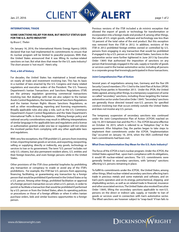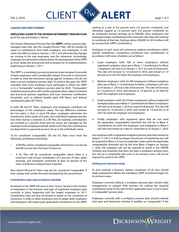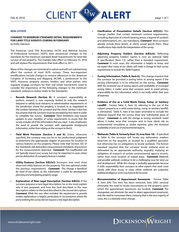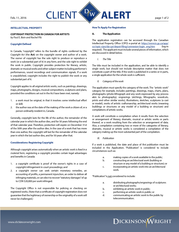Description
IV. Ownership
The application must include the name and complete mailing address
of the owner of the copyright. If more than one copyright owner, any
additional names and addresses must also be included in the application.
The copyright owner is usually the author of the work, but can also be
the employer of the author or any other person (individual or other legal
entity) that has obtained ownership through a transfer of ownership such
as an assignment.
V. Author
The name of the author – typically, the individual who created the
work – should be named as author of the work should be included on
the application, although the complete mailing address of the author is
optional.
If there is more than one author, additional names and addresses can
be included, and if the author is deceased, the date of death should be
included in the application, if it is known.
VI. Declaration
The application must contain a declaration that the person who is
applying to register the copyright is one of:
a.
b.
c.
d.
the author of the work;
the owner of the copyright in the work;
an assignee of the copyright; or
a person to whom an interest in the copyright has
been granted by licence.
VII. Filing the Application Form and Filing Fee
To obtain a registration of copyright, a copyright owner must file
an application with CIPO, accompanied by the appropriate fee. The
application can be filed electronically, by mail, or by facsimile.
The fee for filing the Application electronically is CAD$50, while the fee
for filing by any other method is CAD$65.
Once copyright is registered, no further fees are required to maintain the registration. CIPO does not review or assess works in any way and requires a copy of the work be filed with the Application. Protecting Copyright After Registration A. ALERT CLIENT Feb. 11, 2016 The Copyright Symbol Although Canadian copyright law does not require a copyright owner to mark a work with the copyright symbol (©), the use of the copyright symbol serves as a general reminder to the world that the work is protected by copyright.
We recommend that the copyright symbol be used with all work. A copyright symbol should be accompanied by the name of the copyright owner, and the year of first publication. page 2 of 2 It should be noted that a copyright owner may still use the copyright symbol even if the work is not registered. Additionally, although Canadian copyright law does not make the use of a copyright symbol mandatory, certain other jurisdictions (including the United States) do require it. B. Assignments and Licenses An assignment occurs when a copyright owner transfers part or all of their rights to another party for the whole term of the copyright or for a certain part of it.
A licence allows the copyright owner to retain ownership of the copyright, while allowing someone else to use the work for certain purposes and under certain conditions. Should a copyright owner choose to assign or licence the copyright interest, such an assignment or license can be registered with CIPO by filing the original agreement or a photocopy of it, along with the prescribed fee for each work affected by the assignment or licence. A copyright owner can submit a request online or by mail or facsimile. CIPO will retain a copy of the documentation and return the original documentation along with a certificate of registration. This client alert is published by Dickinson Wright LLP to inform our clients and friends of important developments in the field of copyright law .
The content is informational only and does not constitute legal or professional advice. We encourage you to consult a Dickinson Wright lawyer if you have specific questions or concerns relating to any of the topics covered in here. FOR MORE INFORMATION CONTACT: Paul E. Bain is a partner in Dickinson Wright’s Toronto Office and can be reached at 416.646.8364 or pbain@ dickinsonwright.com .
Once copyright is registered, no further fees are required to maintain the registration. CIPO does not review or assess works in any way and requires a copy of the work be filed with the Application. Protecting Copyright After Registration A. ALERT CLIENT Feb. 11, 2016 The Copyright Symbol Although Canadian copyright law does not require a copyright owner to mark a work with the copyright symbol (©), the use of the copyright symbol serves as a general reminder to the world that the work is protected by copyright.
We recommend that the copyright symbol be used with all work. A copyright symbol should be accompanied by the name of the copyright owner, and the year of first publication. page 2 of 2 It should be noted that a copyright owner may still use the copyright symbol even if the work is not registered. Additionally, although Canadian copyright law does not make the use of a copyright symbol mandatory, certain other jurisdictions (including the United States) do require it. B. Assignments and Licenses An assignment occurs when a copyright owner transfers part or all of their rights to another party for the whole term of the copyright or for a certain part of it.
A licence allows the copyright owner to retain ownership of the copyright, while allowing someone else to use the work for certain purposes and under certain conditions. Should a copyright owner choose to assign or licence the copyright interest, such an assignment or license can be registered with CIPO by filing the original agreement or a photocopy of it, along with the prescribed fee for each work affected by the assignment or licence. A copyright owner can submit a request online or by mail or facsimile. CIPO will retain a copy of the documentation and return the original documentation along with a certificate of registration. This client alert is published by Dickinson Wright LLP to inform our clients and friends of important developments in the field of copyright law .
The content is informational only and does not constitute legal or professional advice. We encourage you to consult a Dickinson Wright lawyer if you have specific questions or concerns relating to any of the topics covered in here. FOR MORE INFORMATION CONTACT: Paul E. Bain is a partner in Dickinson Wright’s Toronto Office and can be reached at 416.646.8364 or pbain@ dickinsonwright.com .









